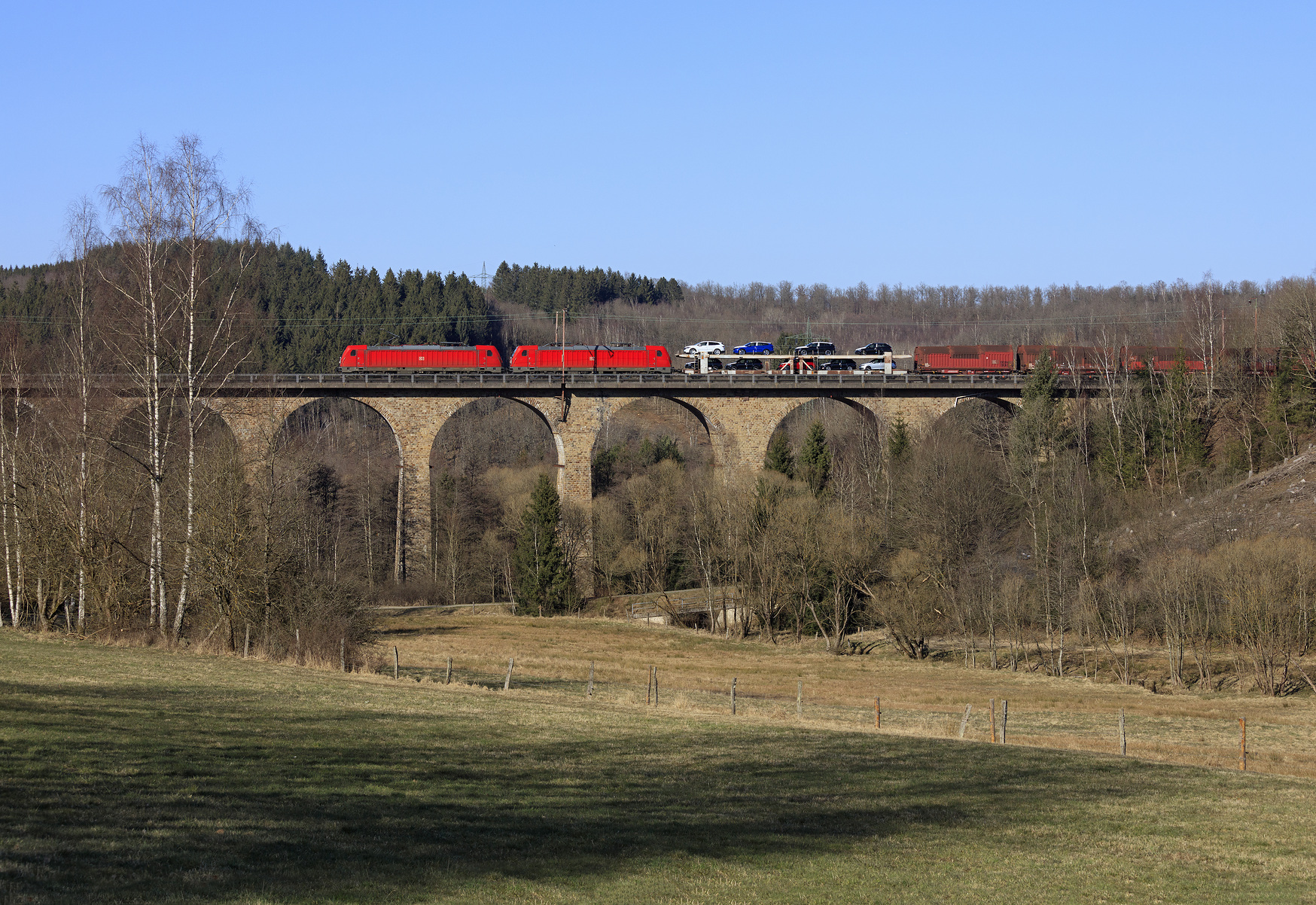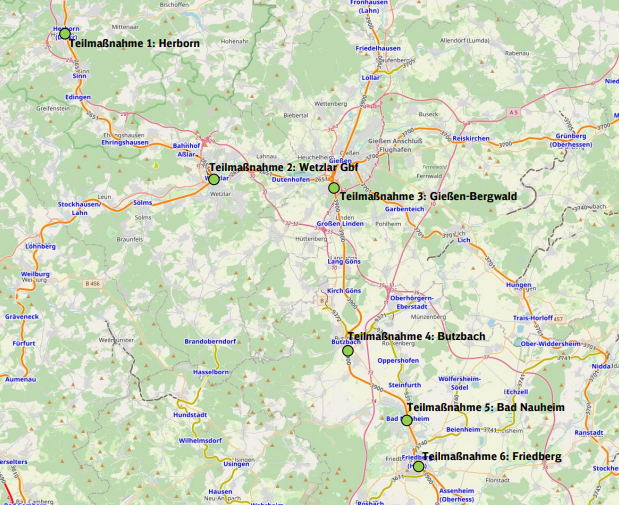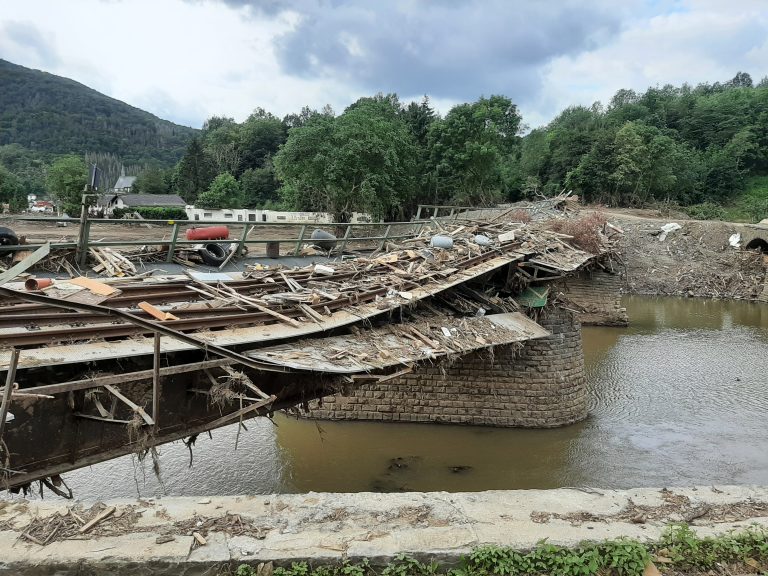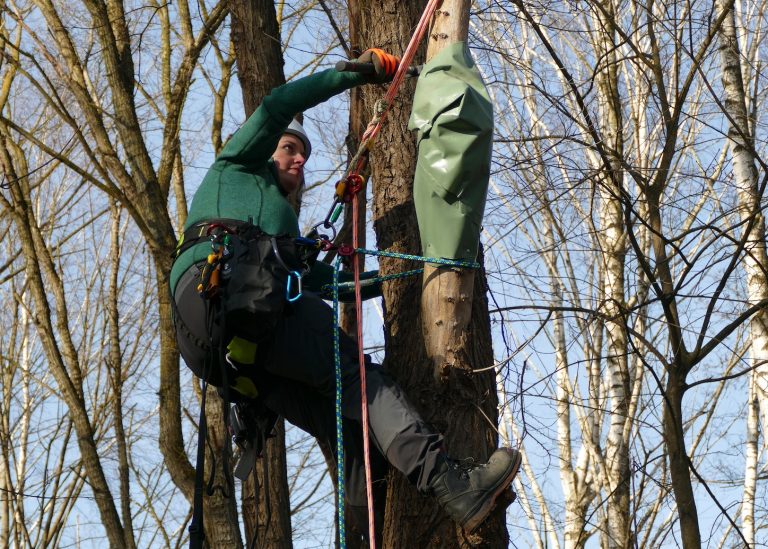In mid-2022, DB E&C took over technical management in the design of planning section 4 of the large-scale project “Upgrade of the Haiger to Hanau line”. Just nine months later, the initial planning documents were handed over to DB Netz AG.

Contact
DB Engineering & Consulting
EUREF-Campus 14
10829 Berlin
Germany
To meet increasing demands on freight transport, the 241-kilometer double-track upgrade of the Haiger to Hanau line (Hagen-Siegen-Hanau) is being extensively upgraded. The aim is to create an attractive alternative for freight trains from Belgium, the Netherlands and North Rhine-Westphalia heading toward Bavaria, the Czech Republic and Austria. Currently, these trains use the Rhine Corridor, one of the busiest rail lines in Europe. The capacity of the rail lines along this corridor needs to be increased to avoid bottlenecks on the European rail network.
The line is currently unattractive for most freight transports, especially for combined transport, because the tunnels along the line have insufficient clearance limits. Upgrading the line will change this situation. The overall measure is divided into four planning sections (PS). In the Hagen–Hanau sections (PS 1 to 3), the clearance limits of ten tunnels (total length: 4.2 kilometers) will be widened to allow combined transport. In the fourth section (PS 4) from Haiger via Giessen to Hanau, the measures planned mainly involve capacity management. A new tunnel is also being built near Giessen-Bergwald. In addition to passing sidings for freight trains, there is to be an increase in the number of signal blocks, including new signals, on certain sections of the line to permit all trains to run more punctually in the future.
One of the biggest challenges from the very beginning was the very tight schedule. In planning section 4 of the large-scale “Haiger to Hanau upgrade” project, DB E&C is responsible for the design in the first two phases as well as for all technical disciplines, logistics, construction process and construction implementation of the sub-measures (currently six in number). In mid-2022, the engineering consortium Hagen-Siegen-Hanau PS4 was commissioned by DB Netz. DB E&C managed the engineering consortium’s planning work.
Six sub-measures to plan
For planning section 4, from Haiger via Giessen to Hanau, the experts had to prepare the initial planning for six subprojects. In this planning phase, the pre-construction information is to be determined and initial planning is to be prepared in order to find preferred solutions for the sub-measure. The experts are faced with a complex planning situation, as the existing infrastructure includes many immovable obstructions.

The planned sub-measures on this section of line include the construction of new passing sidings and crossovers as well as accompanying modifications to signaling equipment. Parts of the station are also affected, where, among other things, existing headspan assemblies will have to be replaced with new overhead line equipment featuring single masts.
The key element of this planning section is the construction of a new 700-meter tunnel with crossing and long trough constructions in the gantry areas near Giessen. The tunnel will enable trains from Frankfurt to Wetzlar or Hagen to pass through the part of the station without crossing the highly congested line from Kassel via Giessen to Frankfurt and no longer have to wait for crossing traffic, which leads to capacity restrictions and impacts punctuality.
Ambitious target deadlines
To meet the deadline set by DB Netz AG for the completion of the extensive upgrade project, the planning team only had around six months to complete the basic evaluation (HOAI phase 1), BIM modeling, and preparation of the initial planning documents. The first milestone, which is important to the customer and relevant for the funding of the project, was reached in March 2023 and the variant concept report was successfully handed over.
What the customer says:
DB Netz AG large-scale project manager Dirk Schütz adds: “The timeline for initial planning was very short. Our work with the planning team was therefore based on a very tight schedule and good collaboration. Everyone brought their strengths to the table and the focus was always on working together to find solutions. The task now is to coordinate the planning with all stakeholders – both internal and external – and to incorporate the new findings into further planning. The client is looking forward to further collaboration and mastering the next challenges together.”





